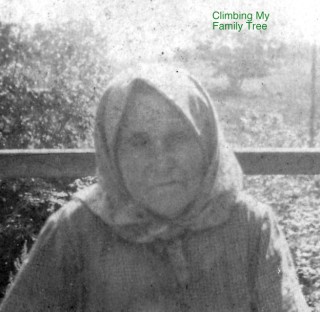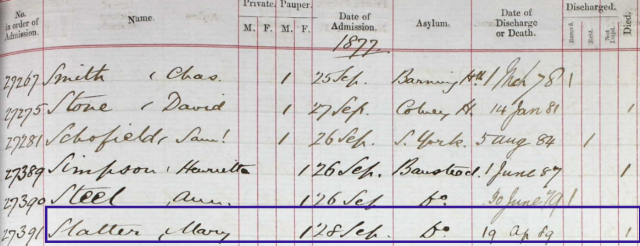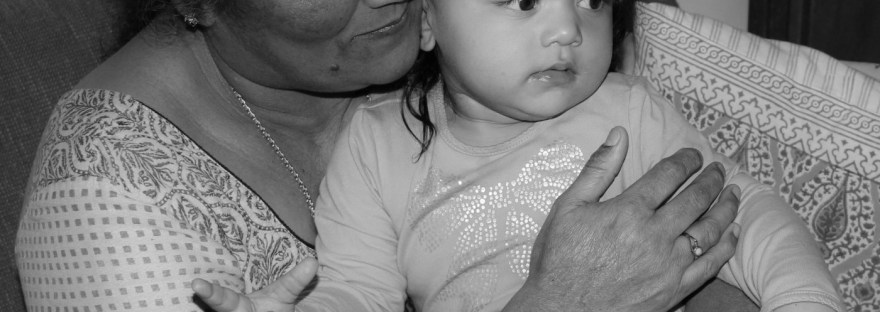Talk to living relatives
Encourage children to talk to their living relatives, especially the older ones. Hearing stories about what life was like in the past helps young people connect to the past. This connection brings generations together and establishes strong family bonds.
Children and teenagers can interview relatives and record the interviews on a video- or audiotape.
Tell stories
Tell stories about your life and the lives of your ancestors. Young people need more than facts and dates. They need the facts and dates packaged in interesting, meaningful, and memorable ways. The best way to create an interest in family history is by telling young people stories about real people. Fill your stories with interesting information, humorous details, and unusual facts that will capture a young imagination. Sharing family stories doesn’t have to be a big event; make it a common occurrence around the dinner table, in the car, or at bedtime.
Share heirlooms and photographs
Holding something that once belonged to an ancestor can be a powerful experience. Pictures and heirlooms make the past come alive. Children especially enjoy photographs that show how clothing and hairstyles have changed over the years. Keep photographs and family heirlooms around your home, so children are constantly reminded of their heritage. Tell stories and histories about the item and its owner.
Attend family reunions
Family reunions are a good way for different generations and branches of a family to come together. A family reunion gives young people an opportunity to know relatives they might not otherwise meet. It gives them a chance to create experiences and memories that can last a lifetime. Help children and youth understand how they are related to each person they meet. For example, you might say, “This is your great-aunt Phyllis. She is your grandma’s older sister.”
Go on family history field trips
Children of all ages enjoy field trips. A family history field trip could be across the country or just down the street. Visit places your ancestors lived or worked. Visit graveyards. Go to museums or living history exhibits, such as a historically re-created village or a historical farm that shows how your ancestors lived. Celebrate your family’s ethnic heritage at a cultural festival. Use an Internet search engine to help you find festivals and living history exhibits in your area. Above all, make these trips fun for the children.
Play family history games
Games are a good way to make family history fun. Family history board games are available for purchase, but you can also make up games that are specific to your family. It’s easy to create a trivia or matching game or adapt a common game such as Bingo. Your children could even help make up the game. For examples of family games and instructions on how to create them, see Appendix A of this lesson.
Involve entertainment
Music and movies from the past are another way to reach young people. Share music from different eras, and teach children some of the dances their grandparents used to dance. Children enjoy learning the old songs their great-grandparents used to sing. Watch movies that were popular during the lifetime of an ancestor or that portray a certain period in history. Children are often amazed to see some of the old silent movies that were popular in the past.
Celebrate with food
Food is an important part of holidays and family gatherings, and it was the same for our ancestors. Make your grandmother’s apple pie recipe or your father’s famous meatloaf for your children. Food from different countries where your ancestors lived can provide an interesting variation on your normal diet. International recipes are available on the Internet and in many cookbooks. You can prepare pastries from France or kimchi from Korea for a special family history meal. Visit http://www.cyndislist.com/recipes.htm for a list of Web sites that can help you.
Create personal histories
Help children and teenagers create their own personal histories. They could keep a journal, create a scrapbook, or write stories from their lives. Give them a camera or help them take pictures of events and save those photographs in an album. For a list of Web sites that may help you, go to http://www.cyndislist.com/photos.htm or www.cyndislist.com/scrapbooks.htm.
Tie family history into school work
Make the connection between what children learn in school and their family history. For example, if a child is studying a historical event, tell what an ancestor did who witnessed or participated in that event. Look on the Internet for information about what life was like during that time period and how wars and other events affected daily life. If a teenager studies a book for school, tell about ancestors who lived at the same time as the author or who may have experienced some of the events described in the book. Help students learn about geography by looking at a map to see where ancestors lived. If children need to choose a state or country for a report, suggest that they choose a place where your ancestors lived. If you have photographs of the area your family came from, you can use those photographs to augment your child’s studies.
https://familysearch.org/wiki/en/Involve_Children_and_Youth_in_Family_History





